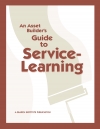Traditionally, service-learning has built intergenerational relationships primarily in two ways:
- Having young people engage in service with and for senior citizens. These projects might include adopt-a-grandparent” or collecting oral histories; and
- Recognizing the important role that adult sponsors and allies play in service-learning experiences and emphasizing the need for adequate adult involvement and supervision in service-learning efforts.
Both of these approaches are important strategies for building intergenerational relationships through service-learning. In addition, organizations and communities are recognizing the potential of people of all ages—from young to middle-aged to elderly—serving others together. And while such an approach may be difficult to undertake in settings that primarily serve one age group (such as schools), the potential is great in organizations that engage people of all ages, including community initiatives, community agencies, volunteer centers, and congregations.
How do you design effective service-learning programs for intergenerational groups? Once again, the basic principles of service-learning also apply to intergenerational service-learning. In addition, consider the following suggestions:
- Involve all generations in planning and preparation;
- Make sure the experience is meaningful and beneficial to all generations. Ensure that all ages can give as well as receive;
- Encourage cross-generation conversation, sharing, and relationship building. This can be enhanced by helping people in each generation understand the other generations more fully so that they don’t begin their time together with numerous misperceptions and stereotypes;
- Recognize both the strengths and limitations of the people involved. For example, elderly participants have a great deal of wisdom, experience, and perspective. Many also find that their bodies are slowing down, and their hearing and eyesight are diminished; and
- Be explicit and intentional in nurturing mutual respect and understanding across generations. This can be accomplished, for example, by ensuring that people from all generations have active leadership roles in planning and executing projects. It also can be addressed by ensuring that no single generation dominates times of reflection.
Developing intergenerational programs doesn’t have to begin from scratch. Often, existing service-learning activities can be broadened to include other generations. If, for example, you already have a strong youth service-learning program, look for ways to incorporate other ages into those experiences to make them more intergenerational. Or identify specific components of existing programs that would naturally work as intergenerational experiences.
Intergenerational service-learning has particular power for community-wide asset-building initiatives, since it can be an exceptional opportunity to build community and relationships across all age groups. Multiple organizations in the community—schools, congregations, service clubs, community agencies, neighborhood associations, and senior citizen centers—can all be involved actively in planning events and engaging their constituencies in serving others and the community…
Young people can often be the catalysts for involvement by other ages. As young people have positive service-learning experiences on their own, others see their enthusiasm and can be eager to join in if invited. In these cases, the young people become the teachers and mentors to others who get involved.

